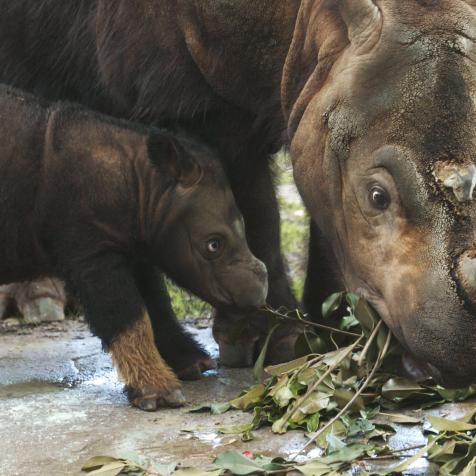
AFP
The World’s Smelliest Flower Blooms Once a Decade
In previous years, corpse flower blooms have drawn large crowds and three-hour wait times. What makes this stinky flora so special?
The corpse flower smells like… well, a dead body. Given its rotting odor, the plant, whose technical name is Amorphophallus titanum has also been dubbed the corpse bride, corpse plant, and the world’s smelliest flower.
The plant’s smell has also been likened to “Limburger cheese, garlic, rotting fish, and smelly feet.”
The titan arum is a flowering plant, native to Indonesia’s island of Sumatra. The plant's full bloom only once every seven to ten years. This rare event only lasts 24 to 36 hours. Generally, the flower will open mid-afternoon and stay open all through the night and into the next morning.

Andy Cross
After a nearly three-hour wait, patrons of the Denver Botanic Gardens finally get a chance to view and photograph the Corpse Flower, Amorphophallus titanum, on August 19, 2015. Thousands waited in line for hours to get a glimpse, smell, and have their picture taken close to it.
The corpse flower is classified as endangered, with fewer than 1,000 individuals left in the wild. Flower enthusiasts travel from all over the world to witness this infrequent occurance. Visitors will return day after day to conservatories, greenhouses, and botanical gardens with a predicted corpse flower bloom so as not to miss the short window.
The titan arum’s inflorescence can reach more than 10 feet in height. And just the leaf structure alone can reach up to 20 feet tall and 16 feet across. The plants underground stem, or corm, can weigh up to 110 pounds.
But blooming does not mark the end of the corpse flower’s lifecycle. If pollinated, the titan arum will produce fruit for about the next nine months. Once the fruit has ripened, the plant will die and emerge again as a leaf after a yearlong period of dormancy, then begin its lifecycle again.

Fadil Aziz
Amorphophallus titanum is the largest flowering plant with unbranched inflorescence in the world.
Why does it smell?
The corpse flower’s scent is a chemical combination of dimethyl trisulfide, isovaleric acid, dimethyl disulfide, benzyl alcohol, indole, and trimethylamine. The odor is meant to mimic decomposition in order to attract its native pollinators– carrion beetles and flesh flies– who are drawn to the smell of decaying meat.
The potency of the stench gradually increases from late evening until the middle of the night– when pollinators are most active. The smell tapers off in the morning.
Where can I see a corpse flower bloom?
Titan arum are native to Indonesia, but there are botanists around the world who cultivate the plants. Corpse flowers are in cultivation in Europe, North & South America, Australia, and Asia. Check out your local botanical gardens to see if a corpse flower near you is blooming in 2022!


















